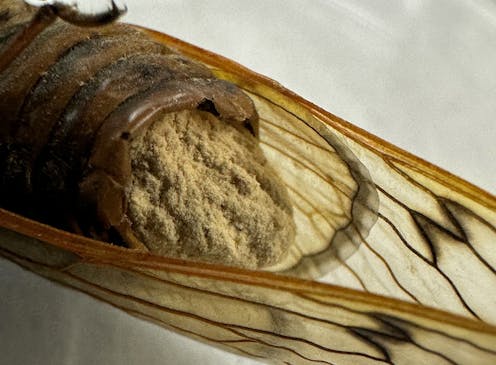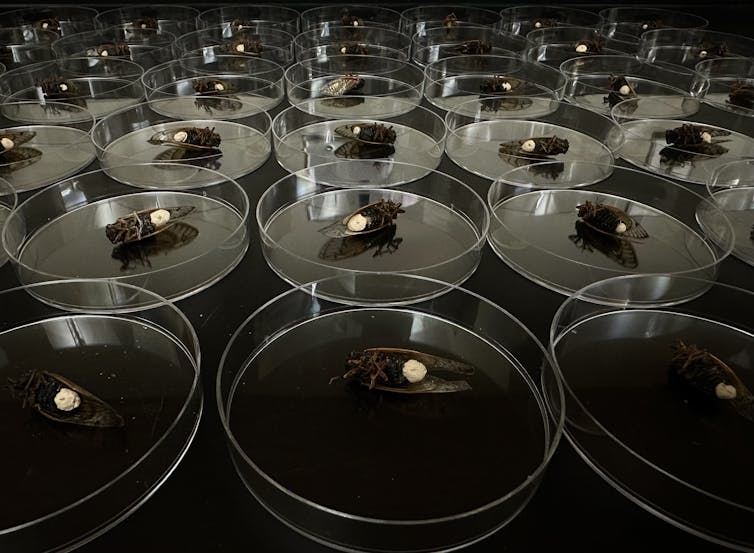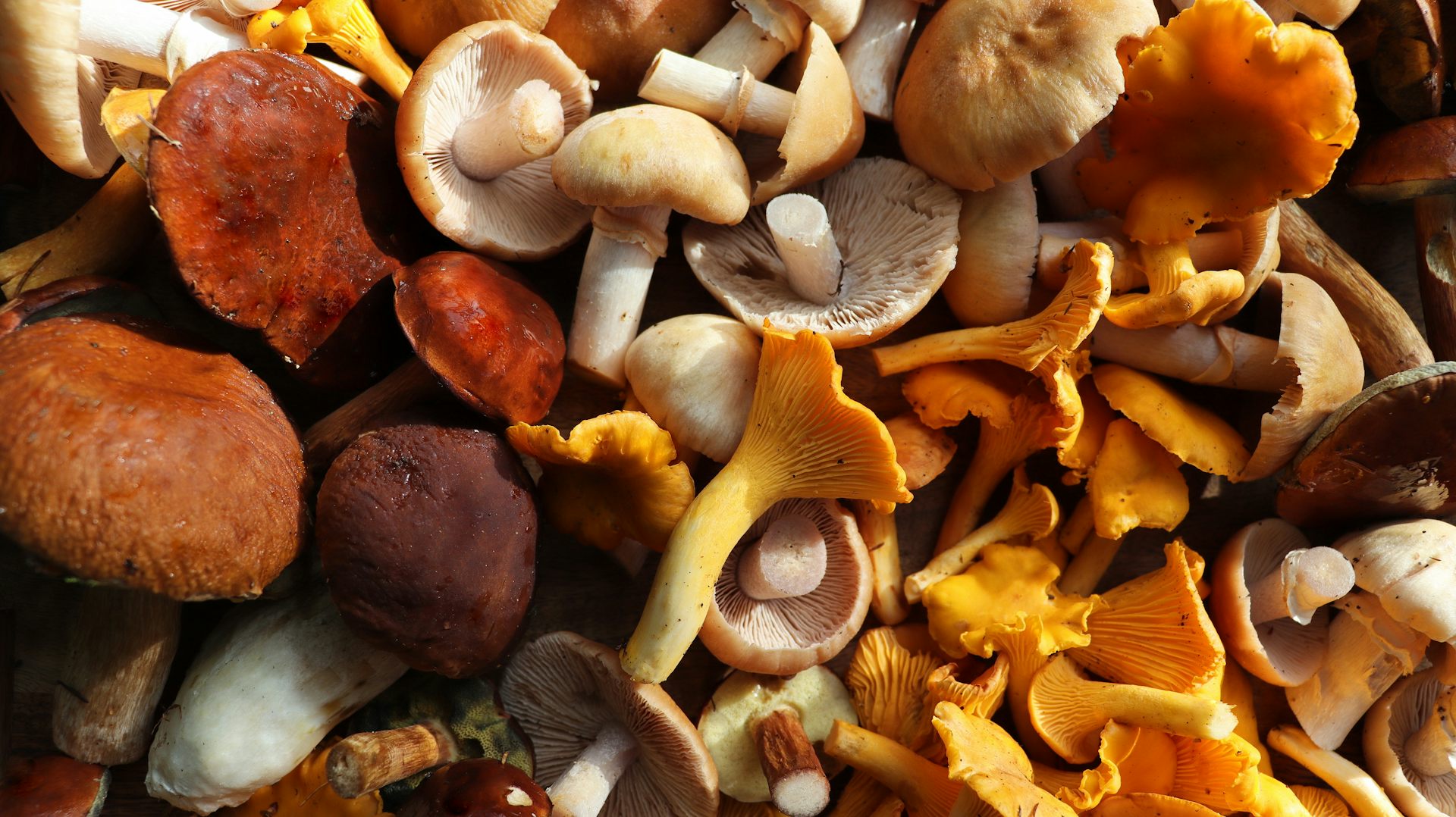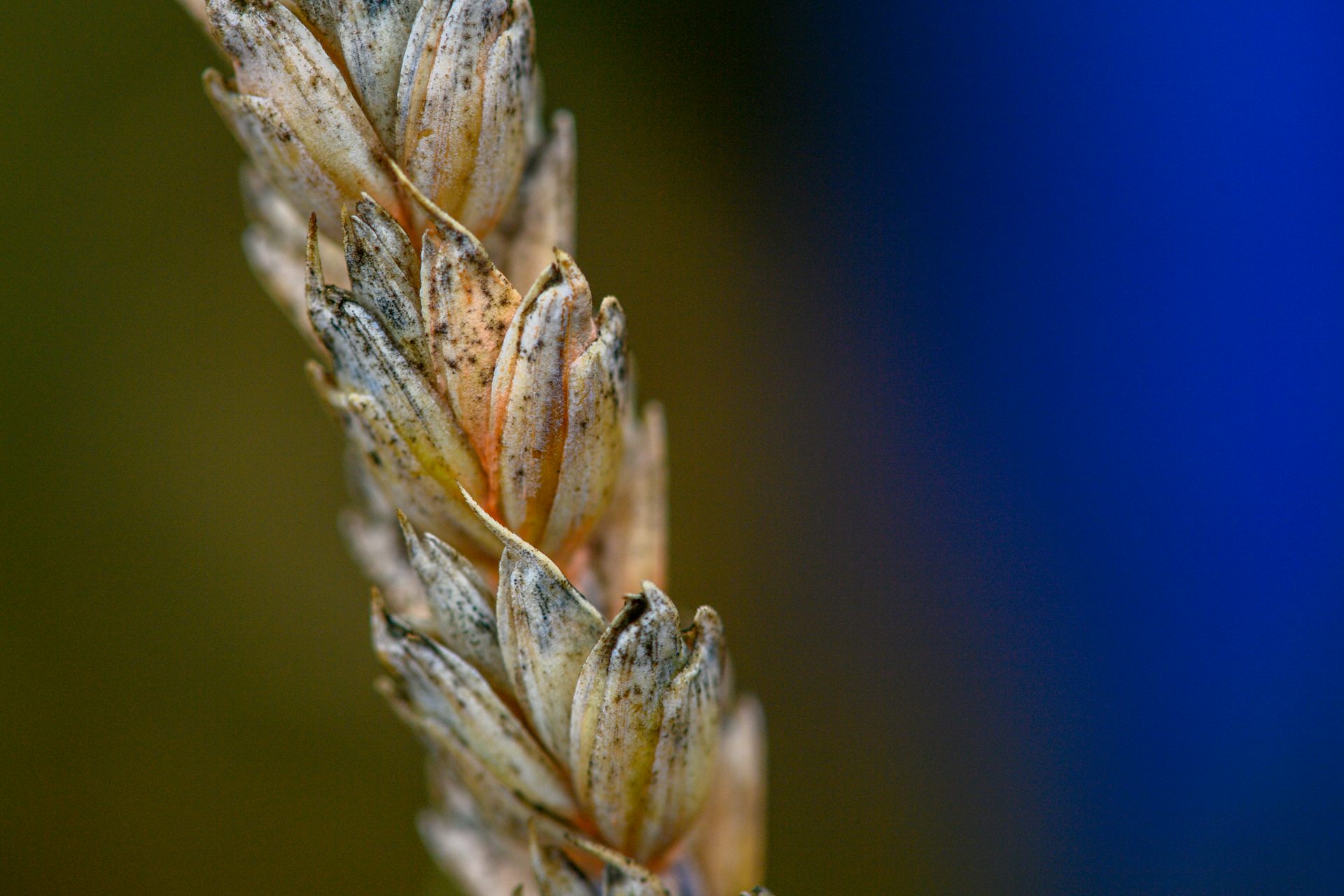Could fungi actually cause a zombie apocalypse?
Be very afraid – if you’re an insect.


Curious Kids is a series for children of all ages. If you have a question you’d like an expert to answer, send it to curiouskidsus@theconversation.com.
Is a zombie apocalypse caused by fungi, like the Cordyceps from “The Last of Us,” something that could realistically happen? – Jupiter, age 15, Ithaca, New York
Zombies strike fear into our hearts – and if they’re persistent, eventually they get inside our heads. Animals taken over by zombies no longer control their own bodies or behaviors. Instead, they serve the interests of a master, whether it’s a virus, fungus or some other harmful agent.
The term “zombi” comes from Vodou, a religion that evolved in the Caribbean nation of Haiti. But the idea of armies of undead, brain-eating human zombies comes from movies, such as “Night of the Living Dead,” television shows like “The Walking Dead” and video games like Resident Evil.
Those all are fictional. Nature is where we can find real examples of zombification – one organism controlling another organism’s behavior.
I study fungi, a huge biological kingdom that includes molds, mildews, yeasts, mushrooms and zombifying fungi. Don’t worry – these “brain-eating organisms” tend to target insects.
Insect body snatchers
One of the most famous examples is the zombie ant fungus, Ophiocordyceps unilateralis, which is part of a larger group known as Cordyceps fungi. This fungus inspired the video game and HBO series “The Last of Us,” in which a widespread fungal infection turns people into zombie-like creatures and causes society to collapse.
In the real world, ants usually comes into contact with this fungus when spores – pollen-size reproductive particles that the fungus makes – fall onto the ant from a tree or plant overhead. The spores penetrate the ant’s body without killing it.
Once inside, the fungus spreads in the form of a yeast. The ant stops communicating with nestmates and staggers around aimlessly. Eventually it becomes hyperactive.
Finally, the fungus causes the ant to climb up a plant and lock onto a leaf or a stem with its jaws – a behavior called summiting. The fungus changes into a new phase and consumes the ant’s organs, including its brain. A stalk erupts from the dead insect’s head and produces spores, which fall onto healthy ants below, starting the cycle again.

Scientists have described countless species of Ophiocordyceps. Each one is tiny, with a very specialized lifestyle. Some live only in specific areas: for example, Ophiocordyceps salganeicola, a parasite of social cockroaches, is found only in Japan’s Ryukyu Islands. I expect that there are many more species around the world awaiting discovery.
The zombie cicada fungus, Massospora cicadina, has also received a lot of attention in recent years. It infects and controls periodical cicadas, which are cicadas that live underground and emerge briefly to mate on 13- or 17-year cycles.
The fungus keeps the cicadas energized and flying around, even as it consumes and replaces their rear ends and abdomens. This prolonged “active host” behavior is rare in fungi that invade insects. Massospora has family members that target flies, moths, millipedes and soldier beetles, but they cause their hosts to summit and die, like ants affected by Ophiocordyceps.
The real fungal threats
These diverse morbid partnerships – relationships that lead to death – were formed and refined over millions of years of evolutionary time. A fungus that specializes in infecting and controlling ants or cicadas would have to evolve vastly new tools over millions more years to be able to infect even another insect, even one that’s closely related, let alone a human.
In my research, I’ve collected and handled hundreds of living and dead zombie cicadas, as well as countless fungus-infected insects, spiders and millipedes. I’ve dissected hundreds of specimens and uncovered fascinating aspects of their biology. Despite this prolonged exposure, I still control my own behavior.

Some fungi do threaten human health. Examples include Aspergillus fumigatus and Cryptococcus neoformans, both of which can invade people’s lungs and cause serious pneumonia-like symptoms. Cryptococcus neoformans can spread outside the lungs into the central nervous system and cause symptoms such as neck stiffness, vomiting and sensitivity to light.
Invasive fungal diseases are on the rise worldwide. So are common fungal infections, such as athlete’s foot – a rash between your toes – and ringworm, a rash that despite its name is caused by a fungus.
Fungi thrive in perpetually warm and wet environments. You can protect yourself against many of them by showering after you get sweaty or dirty and not sharing sports gear or towels with other people.
Not all fungi are scary, and even the alarming ones won’t turn you into the walking dead. The closest you’re likely to come to a zombifying fungus is through watching scary movies or playing video games.
If you’re lucky, you might find a zombie ant or fly in your own neighborhood. And if you think they’re cool, you could become a scientist like me and spend your life seeking them out.
Hello, curious kids! Do you have a question you’d like an expert to answer? Ask an adult to send your question to CuriousKidsUS@theconversation.com. Please tell us your name, age and the city where you live.
And since curiosity has no age limit – adults, let us know what you’re wondering, too. We won’t be able to answer every question, but we will do our best.
Matt Kasson has received funding from the National Science Foundation, the National Geographic Society, USDA ARS and USDA APHIS.
Read These Next
More than half of new articles on the internet are now being written by AI – is human writing headed
As AI floods the internet with text, it could mean human voices will matter more – not less.
Mid-Atlantic mushroom foragers collect 160 species for food, medicine, art and science
Two ethnobiologists at Penn State surveyed over 800 mushroom harvesters in the mid-Atlantic region to…
What is Fusarium graminearum, the fungus a Chinese scientist pleaded guilty to smuggling into the US
When Fusarium graminearum infects wheat, it can pose a risk to humans, animals and agriculture.






